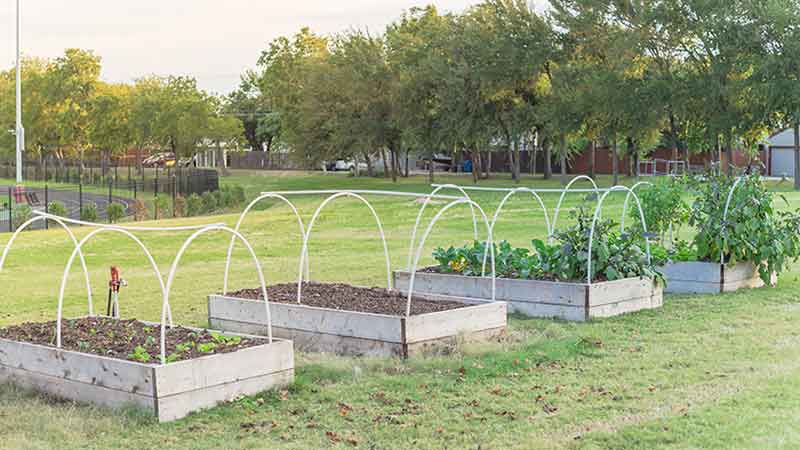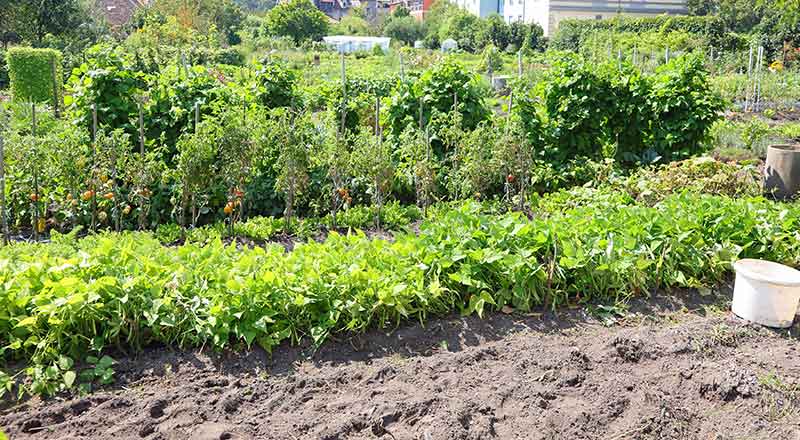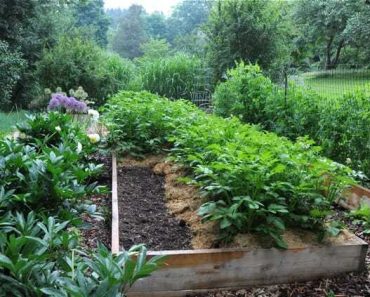Community gardens have become vital green spaces in urban environments, offering a multitude of benefits to individuals and neighborhoods alike. They provide fresh produce, enhance social ties, promote physical and mental well-being, and contribute to environmental sustainability.

Understanding the different types of community gardens can inspire more people to participate in this transformative movement.
- This article delves into five distinct types of community gardens, highlighting their unique features and contributions to urban life.
1. Neighborhood Gardens
Neighborhood gardens are perhaps the most common type of community garden. These gardens are typically situated in residential areas and are managed collectively by local residents.
The main goal is to create a shared space where people can grow fruits, vegetables, flowers, and herbs.
Key Features:
– Shared Plots: Residents often share plots or have individual plots within the garden.
– Community Events: Neighborhood gardens often host events such as potlucks, gardening workshops, and seasonal festivals.
– Social Cohesion: These gardens foster a sense of community and belonging among participants.
Impact:
Neighborhood gardens help alleviate urban isolation by providing a space for social interaction. They also offer educational opportunities for children and adults to learn about sustainable gardening practices.
Additionally, they can improve local food security by providing fresh produce to families who may lack access to grocery stores.
2. School Gardens
School gardens are educational tools that integrate gardening into the school curriculum. These gardens are usually located on school grounds and involve students in all aspects of gardening, from planting seeds to harvesting crops.
Key Features:
– Curriculum Integration: Lessons in science, math, and even art can be incorporated into garden activities.
– Student Involvement: Students take an active role in maintaining the garden.
– Outdoor Classroom: The garden serves as an outdoor classroom where experiential learning takes place.
Impact:
School gardens provide hands-on learning experiences that can enhance academic achievement and promote environmental stewardship. They encourage healthy eating habits by teaching children where their food comes from and how it is grown.
Moreover, these gardens can foster a sense of responsibility and teamwork among students.

3. Therapeutic Gardens
Therapeutic gardens are designed with the primary purpose of promoting physical and mental health. These gardens are often associated with hospitals, rehabilitation centers, senior living facilities, and other healthcare settings.
Key Features:
– Accessible Design: Therapeutic gardens are designed to be accessible to people with various physical abilities.
– Sensory Elements: They include plants and features that stimulate the senses, such as fragrant flowers, textured leaves, and water features.
– Calming Environment: The design focuses on creating a peaceful and restorative environment.
Impact:
Therapeutic gardens have been shown to reduce stress, anxiety, and depression while enhancing overall well-being. They provide a tranquil space for patients to relax and recover.
For seniors or individuals with mobility issues, these gardens offer an opportunity for gentle exercise and connection with nature.

4. Allotment Gardens
Allotment gardens consist of individual plots that are rented out to members of the community. These plots are usually located in designated public spaces and can be leased by individuals or families who wish to grow their own food.
Key Features:
– Individual Plots: Each gardener is responsible for their own plot but benefits from being part of a larger gardening community.
– Resource Sharing: Gardeners often share resources such as tools, seeds, and compost.
– Diverse Crops: Allotment gardens typically feature a wide variety of plants grown by different gardeners.
Impact:
Allotment gardens promote self-sufficiency by allowing individuals to grow their own food. They also encourage biodiversity through the cultivation of diverse plant species.
These gardens provide opportunities for social interaction among gardeners who can exchange tips and support each other’s efforts.
5. Urban Farms
Urban farms take community gardening to a larger scale by utilizing vacant lots, rooftops, or other underused urban spaces for agricultural production.
These farms often operate as social enterprises or non-profit organizations aiming to address food insecurity and provide job training.
Key Features:
– Larger Scale Production: Urban farms produce larger quantities of food compared to typical community gardens.
– Commercial Aspect: Some urban farms sell their produce at local markets or through Community Supported Agriculture (CSA) programs.
– Community Involvement: Volunteers from the community often help with farming activities.
Impact:
Urban farms play a crucial role in improving food access in underserved areas. They create job opportunities and provide training in agricultural skills. Additionally, they contribute to environmental sustainability by reducing the carbon footprint associated with transporting food from rural areas to cities.
Conclusion
Community gardens come in various forms, each serving unique purposes and offering distinct benefits. With pros and cons, whether it’s fostering social connections in neighborhood gardens or promoting educational opportunities in school gardens, these green spaces enrich urban life in countless ways.

Therapeutic gardens offer healing environments for those in need, while allotment gardens empower individuals to grow their own food. Urban farms tackle food insecurity head-on while promoting sustainable practices.
By understanding the different types of community gardens and their impacts, we can better appreciate their value and advocate for their inclusion in urban planning. Participating in or supporting community gardening initiatives not only enhances our personal well-being but also strengthens the fabric of our communities.
As we continue to face challenges related to urbanization and environmental sustainability, community gardens stand as beacons of hope—nurturing both people and the planet.



![Georgia’s Farming and Gardening Sector: Top 10 Easiest Veggies to Grow [Infographic] Georgia’s Farming and Gardening Sector: Top 10 Easiest Veggies to Grow [Infographic]](https://sunlitgarden.com/wp-content/uploads/2019/10/variety-of-vegetables-370x297.png)


























